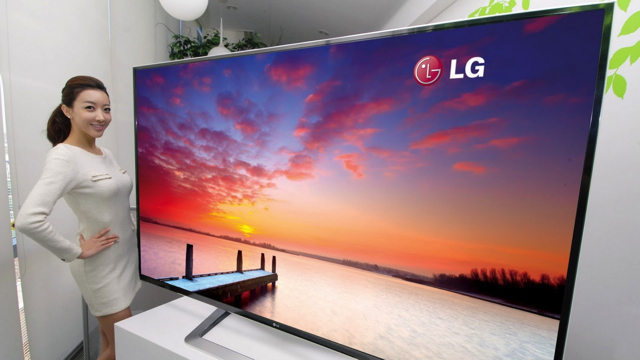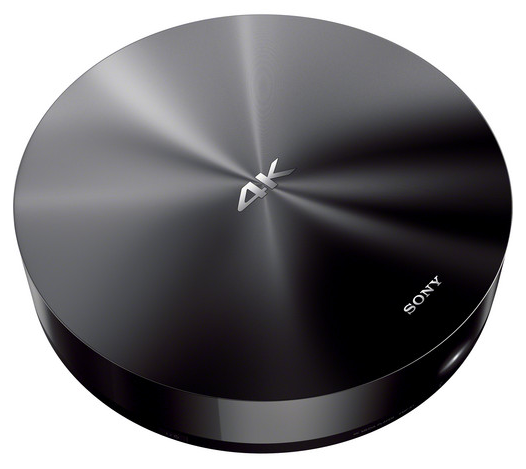CES 2014: Exciting Possibilities for Future of 4K Ultra HDTV
December 18, 2013
At January’s 2014 International CES in Las Vegas, the ETC reporting team will be looking at how vendors are positioning 4K UHD TVs, including what features they consider compelling, and how they are building out the full consumer experience with an ecosystem of products and services. Features we’ll be watching for include resolution and pixel count, extended dynamic range, wider color gamut, a “director’s intent” setting, the latest in 3D, advances in audio, and more.
 Resolution: Will resolution and pixel count be used as a market differentiator (cinema 4K, broadcast 4K, Internet 4Ks)? Will vendors discuss pixel density instead? Or will they simply leave matters vague and hype the experience of higher resolution?
Resolution: Will resolution and pixel count be used as a market differentiator (cinema 4K, broadcast 4K, Internet 4Ks)? Will vendors discuss pixel density instead? Or will they simply leave matters vague and hype the experience of higher resolution?
Dynamic Range: Dolby recently announced the results of an in-house study in which subjects were shown images prepared for and displayed at standard dynamic range and extended dynamic range. Ninety percent of the subjects preferred the extended dynamic range images. We will be looking to see if other vendors are discussing or showing extended dynamic range material and CE devices. We expect to hear the topic raised at booths showing 4K OLED displays, which are capable of far greater dynamic range than LED/LCD displays.
Color Gamut: We have not seen PR material mentioning wider color gamut — colors in the vibrant neon range normally associated with black-light psychedelic posters. We will be on the lookout for it at CES because it is our understanding that it is easier to build into displays than extended dynamic range. Wider color gamut may be used as a near-term marketing differentiator while the manufacturers work to improve the economics of extended dynamic range display production.
Director’s Intent: The features and capabilities of 4K displays can rival the theatrical experience. Creative industry professionals have long sought a “director’s intent” setting in displays. We’ll be listening for any buzz around the concept on the show floor.
 3D: A few years ago 3D content and displays were major news items. Today they occupy a quiet niche. The technology is built into many displays, but not heavily marketed. 4K TVs, with their greater pixel density and pixel count, offer an improved 3D content viewing experience. We’ll be reporting on how 3D fits into the UHD content and display marketing messaging mix.
3D: A few years ago 3D content and displays were major news items. Today they occupy a quiet niche. The technology is built into many displays, but not heavily marketed. 4K TVs, with their greater pixel density and pixel count, offer an improved 3D content viewing experience. We’ll be reporting on how 3D fits into the UHD content and display marketing messaging mix.
Audio: Jim Bottoms, executive director of MESA Europe, recently reported that home audio is the fastest growing sector in consumer electronics. Consumers spent 20 percent more on audio in 2013 than they did in 2012, and there is a clear move toward higher end audio equipment. Dolby, DTS and others are developing and marketing new audio experiences. There is a High Rez Audio Experience Zone, primarily dedicated to music playback equipment, at this year’s CES. We’ll be looking to see how audio plays into the messaging mix of UHD products.
Vendors: We will look at the top tier display manufacturers including Sony, LG, Panasonic, Samsung, Toshiba and others. But we will also look at the Chinese brands, such as TCL, Haier and Changhong for hints of where the market may go. Their lower price point products, with a full collection of features, may not offer the image and performance quality of the top tier, but they sell about as many units as the first tier 2K TVs, according to Pete Puttman of HDTVexpert.com.
 Ecosystem: The success of 4K UHD TV in the marketplace will be heavily dependent on how well the full ecosystem of products and services is built out. Beyond displays, we’ll be looking for 4K consumer camcorders, storage and playback devices, including devices that upscale 2D content for 4K display, and 4K content services. The Sony 4K Ultra HD Media Player and the REDRAY player are examples of playback devices. Netflix has announced that it will start streaming 4K content to customers in 2014.
Ecosystem: The success of 4K UHD TV in the marketplace will be heavily dependent on how well the full ecosystem of products and services is built out. Beyond displays, we’ll be looking for 4K consumer camcorders, storage and playback devices, including devices that upscale 2D content for 4K display, and 4K content services. The Sony 4K Ultra HD Media Player and the REDRAY player are examples of playback devices. Netflix has announced that it will start streaming 4K content to customers in 2014.
Industry experts at the November 2014 CEA Ultra HD Conference said that streaming services like Netflix will be the main method of content delivery for the foreseeable future, or a least until a broadcast standard (for example, ATSC 3.0) is ratified and implemented. We expect to see more 4K tablets for viewing the stream. (Last year Panasonic showed a 20-inch 4K tablet.) Analyst Robert Silva has reported that Panasonic and Sony are developing 300GB Blu-ray storage discs, and speculate that we may see a new native 4K Blu-ray disc format in the foreseeable future.
We’ll be reporting on evidence that the 4K UHD ecosystem is being built out, as well as on the features that vendors consider compelling to consumers, at CES, January 6-10.

No Comments Yet
You can be the first to comment!
Leave a comment
You must be logged in to post a comment.